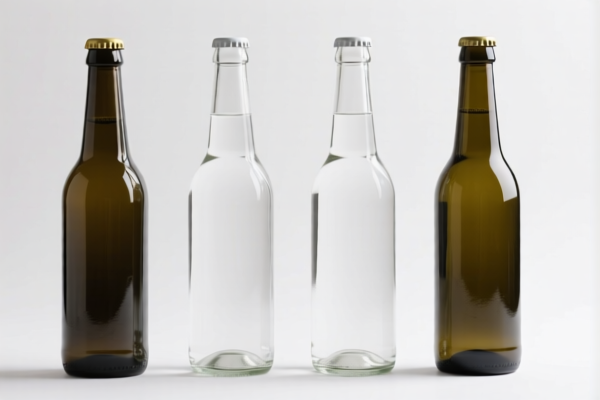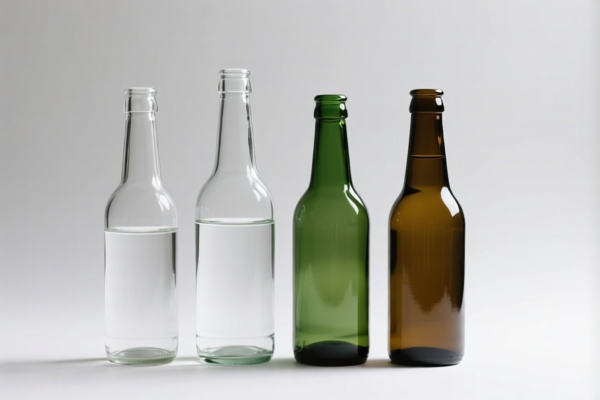| HS Code | Official Doc | Tariff Rate | Origin | Destination | Effective Date |
|---|---|---|---|---|---|
| 3923300010 | Doc | 58.0% | CN | US | 2025-05-12 |
| 3923300090 | Doc | 58.0% | CN | US | 2025-05-12 |
| 4016990300 | Doc | 58.0% | CN | US | 2025-05-12 |
| 4016991500 | Doc | 40.2% | CN | US | 2025-05-12 |
| 7009100000 | Doc | 58.9% | CN | US | 2025-05-12 |
| 9503000090 | Doc | 30.0% | CN | US | 2025-05-12 |
| 9503000071 | Doc | 30.0% | CN | US | 2025-05-12 |
| 9617006000 | Doc | 37.2% | CN | US | 2025-05-12 |
| 9617001000 | Doc | 37.2% | CN | US | 2025-05-12 |
| 3926901600 | Doc | 40.6% | CN | US | 2025-05-12 |
| 3926901000 | Doc | 40.9% | CN | US | 2025-05-12 |
| 7010905005 | Doc | 55.0% | CN | US | 2025-05-12 |
| 7010905009 | Doc | 55.0% | CN | US | 2025-05-12 |
| 7013492090 | Doc | 60.0% | CN | US | 2025-05-12 |
| 7013993000 | Doc | 46.5% | CN | US | 2025-05-12 |
| 7006001000 | Doc | 63.8% | CN | US | 2025-05-12 |
| 7006004050 | Doc | 59.9% | CN | US | 2025-05-12 |
| 7003120000 | Doc | 56.4% | CN | US | 2025-05-12 |
| 7003190000 | Doc | 56.3% | CN | US | 2025-05-12 |
| 6909900000 | Doc | 59.0% | CN | US | 2025-05-12 |
| 6909195095 | Doc | 59.0% | CN | US | 2025-05-12 |
| 6914108000 | Doc | 64.0% | CN | US | 2025-05-12 |
| 6914908000 | Doc | 60.6% | CN | US | 2025-05-12 |




Bottles with Lids
Bottles with lids are containers, typically cylindrical, designed to hold liquids or solids, and featuring a closure mechanism—the lid—to prevent spillage, contamination, and evaporation. They are ubiquitous in various sectors, ranging from household storage to industrial packaging.
Materials
A wide range of materials are employed in bottle and lid construction, each offering distinct properties:
- Glass: Offers excellent chemical resistance, impermeability, and is readily recyclable. Commonly used for beverages, food preservation, and pharmaceuticals. Can be clear, colored, or frosted.
- Plastic: Lightweight, durable, and versatile. Common plastics include:
- PET (Polyethylene Terephthalate): Frequently used for water, soft drinks, and cooking oils. Recyclable.
- HDPE (High-Density Polyethylene): Used for milk, detergents, and shampoos. Highly recyclable.
- LDPE (Low-Density Polyethylene): Used for squeeze bottles, flexible containers. Recyclable.
- PP (Polypropylene): Resistant to heat and chemicals, used for food storage, medicine bottles. Recyclable.
- PVC (Polyvinyl Chloride): Less common due to environmental concerns, historically used for certain cleaning products.
- Metal (Aluminum & Stainless Steel): Provides excellent protection against light and oxygen. Used for beverages, aerosols, and specialized applications. Highly recyclable.
- Ceramic: Used for specialized applications like essential oils, cosmetics, and decorative purposes.
Purpose & Function
The primary functions of bottles with lids are:
- Containment: Securely holding the contents.
- Preservation: Protecting contents from air, moisture, light, and contamination.
- Portability: Allowing for easy transport of liquids or solids.
- Dispensing: Controlled release of contents (depending on lid type).
- Storage: Maintaining the integrity of contents over time.
Usage Scenarios
Bottles with lids are utilized across numerous industries:
- Food & Beverage: Water bottles, juice bottles, sauce bottles, oil bottles, wine bottles.
- Cosmetics & Personal Care: Shampoo bottles, lotion bottles, perfume bottles, essential oil bottles.
- Pharmaceuticals: Medicine bottles, syrup bottles, liquid antibiotics.
- Household Cleaning: Detergent bottles, bleach bottles, spray bottles.
- Chemicals & Industrial: Reagents, solvents, laboratory samples.
- Baby Care: Baby bottles, formula containers.
Common Types (categorized by lid mechanism)
- Screw-Cap Lids: The most common type, providing a tight seal when twisted onto the bottle neck. Often lined with a material to enhance sealing.
- Snap-Cap Lids: Hinged lids that snap closed, commonly used for beverages and household products.
- Flip-Top Lids: Hinged lids that flip open for dispensing, often used for lotions and shampoos.
- Push-Pull Lids: Lids that are opened by pushing and pulling, often used for small volume dispensing.
- Spray Lids: Incorporate a spray mechanism for dispensing liquids in a fine mist.
- Dropper Lids: Used for precise dispensing of liquids, common in pharmaceuticals and essential oils.
- Rollerball Lids: Used for perfumes and essential oils, dispensing through a rolling ball.
- Cork Lids: Traditionally used for wine bottles, providing a natural seal.
- Child-Resistant Lids: Designed to prevent accidental opening by children, commonly used for medications and hazardous liquids.
Bottles with lids can be classified under several HS codes depending on the material and capacity. Here's a breakdown of relevant classifications:
- 3923300010: This HS code covers articles for the conveyance or packing of goods, of plastics; stoppers, lids, caps and other closures, of plastics: Carboys, bottles, flasks and similar articles of a capacity not exceeding 50 ml. This applies specifically to plastic bottles and their closures with a capacity of 50 ml or less. The total tax rate is 58.0%, comprised of a 3.0% base tariff, a 25.0% additional tariff, and a 30.0% additional tariff effective after April 2, 2025.
- 3923300090: This HS code also covers articles for the conveyance or packing of goods, of plastics; stoppers, lids, caps and other closures, of plastics: Carboys, bottles, flasks and similar articles other than those with a capacity not exceeding 50 ml. This applies to plastic bottles and their closures with a capacity exceeding 50 ml. The total tax rate is 58.0%, comprised of a 3.0% base tariff, a 25.0% additional tariff, and a 30.0% additional tariff effective after April 2, 2025.
- 7009100000: This HS code covers glass bottles. The total tax rate is 58.9%, comprised of a 3.9% base tariff, a 25.0% additional tariff, and a 30.0% additional tariff effective after April 2, 2025.
- 7010905005: This HS code covers carboys, bottles, flasks, jars, pots, vials, ampoules and other containers, of glass, of a kind used for the conveyance or packing of goods; preserving jars of glass; stoppers, lids and other closures, of glass: Other containers (with or without their closures) of a capacity exceeding 1 liter: Having a mouth with an outer diameter of
38 mm or more. The total tax rate is 55.0%, comprised of a 0.0% base tariff, a 25.0% additional tariff, and a 30.0% additional tariff effective after April 2, 2025. - 7010905009: This HS code covers carboys, bottles, flasks, jars, pots, vials, ampoules and other containers, of glass, of a kind used for the conveyance or packing of goods; preserving jars of glass; stoppers, lids and other closures, of glass: Other: Other containers (with or without their closures) of a capacity exceeding 1 liter: Other. The total tax rate is 55.0%, comprised of a 0.0% base tariff, a 25.0% additional tariff, and a 30.0% additional tariff effective after April 2, 2025.
It is important to determine the material (plastic or glass) and capacity of the bottles to select the correct HS code.
Customer Reviews
No reviews yet.